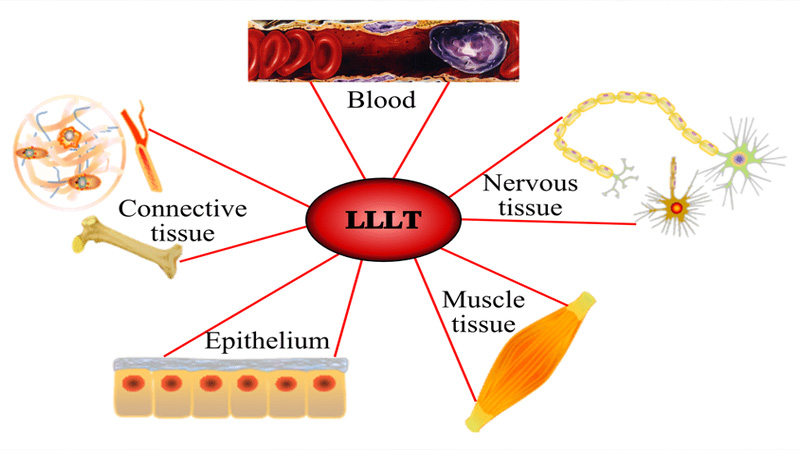
Low level laser therapy (LLLT) is the direct application of light to stimulate cell responses (photobiomodulation) in order to promote tissue healing, reduce inflammation and induce analgesia. There have been significant studies demonstrating its application and efficacy at many sites within the body and for treatment of a range of musculoskeletal injuries, degenerative diseases and dysfunction.
Low-intensity lasers work because cells respond to them. The laser power used for treatment is usually 5 to 500 milliwatts. When a laser is applied to a cell, it is called photobiological stimulation. With the laser treatment, the cells increase "communication" with each other. The laser transmits photons that can penetrate several centimeters beneath the skin. Mitochondria in skin cells absorb the laser's red light, which leads to an increase in adenosine triphosphate (ATP), which means the cell is healthier.
Photobiological stimulation also induces some cellular functions, such as promoting healing, collagen production, enzyme production, and cell growth. As collagen levels rise, the number of damaged skin cells decreases, helping to prevent scar tissue from forming.
In addition to stimulating cell growth, low-intensity laser irradiation can relieve pain. Lasers also have anti-inflammatory properties, which can reduce tissue swelling. Laser can improve the activity of red blood cells, increase their oxygen carrying capacity, quickly remove red blood cells to indicate lipid substances, so it can remove thrombus, prevent and treat cardiovascular and cerebrovascular diseases.
Because low level laser therapy has so many advantages, Pioon also has a lot of experience with dental lasers. We will always adhere to innovation, walk in the forefront of dental laser.